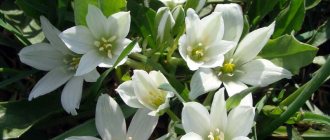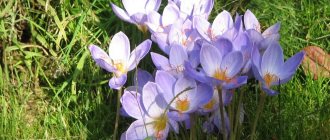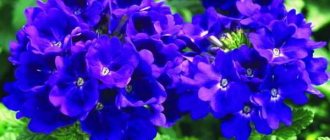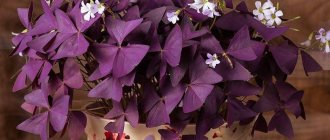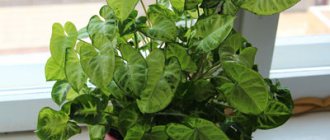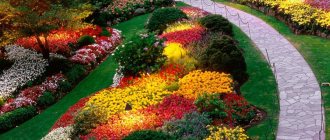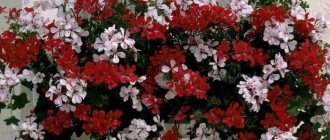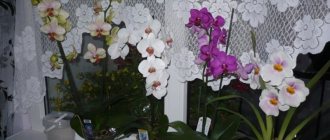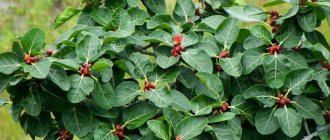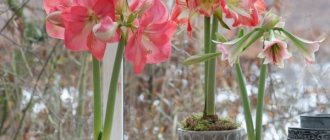Description
Poultry plant is a genus of bulbous perennial bushes belonging to the Asparagus family. According to some reports, the culture is considered to be one of the Liliaceae family. This is a bulbous crop that is grown not only in the garden, but also as a houseplant. The plant reaches a height of 30-80 cm, which makes it possible to cultivate poultry plant in various habitats. The second name for the culture is Indian onion.
The bulbous rhizome has a spherical shape. The tubers are oblong, at the base they have small adventitious roots that go into the ground. The surface of the roots is covered with a dense scaly crust, about 2 mm thick. The diameter of the bulb of an adult plant can reach 5 cm. The peculiarity of the poultry plant is the constant change of rhizome, renewal and rejuvenation.
Basal leaves appear from the base of the bulb neck. Leaf plate of elongated linear shape. In the middle of the leaf blade there is a whitish vein that stands out against the background of the light green surface of the leaf. Leaves appear in spring, before flower stalks begin to form. In some cases, certain species of poultry plant produce foliage in the autumn, and die off by winter. Most often, the leaves grow in several pieces, usually 3-7 basal leaves per crop.
Flowering begins in mid-May, when long flower stalks with bright cream star-shaped flowers appear on the plant. The peduncles are quite dense, light green in color, bare or covered with several leaves. The flowers remain decorative throughout June.
The special shape and color of the inflorescence became the reason for the appearance of such popular names of Indian onions as “bird's milk” or “milk stars”. On the outside, some of the petals have a small green stripe near the perianth. In different varieties, the flowers can be single, collected in long racemes or corymbs. The buds have no aroma and are self-pollinating.
After flowering, a fruit is formed on the plant - an achene, inside which flat black or brown seeds ripen. Seed material retains its germination capacity for a long time.
Ornithogalum orange - description
The perennial bulbous flower Ornithogalum Dubium is classified as a member of the Liliaceae family. Its leaves are yellowish-green, pubescent along the edges, up to 30 cm long. They are belt-shaped, tightly strung on the stem. The poultry bulb is covered in white papery scales that cover it tightly. The diameter of the tubers is 2-5 cm, their shape is oblong-ovoid. An adult bulb lives up to 25 years. Flat leaves grow from the tuber; it constantly produces an increase in small children. The plant can reach a height of 15-50 cm.
A characteristic feature of the bird's eye plant is its six-petalled star-shaped flowers. The plant's buds begin to appear in May. Ornithogalum dubious stands out for its unusually bright inflorescences, which are orange, bright yellow or reddish in color. The upper part of the peduncle is crowned with a pyramid of 20-30 rosettes, making it resemble a miniature bouquet.
Spreading
Indian onion in the wild is found mainly in temperate and subtropical climates. The crop is actively grown as a garden and commercial crop throughout Europe and Asia. The natural habitat of the culture is considered to be the shores of the Mediterranean Sea and southern Africa. Indian onions are cultivated in South America. Individual representatives are found in North America.
Indian onion has a variety of species, but 4 representatives today are in the Red Book. Today, plants are actively cultivated at room temperatures to decorate plots and garden areas.
In the wild, the birdbird lives in coastal areas. In addition, the culture grows on slopes and highlands. The culture prefers nutritious soil and optimal air humidity.
Main types and varieties of poultry grass
The Indian onion genus includes more than 130 species and varieties. Culture is characterized by a variety of growth forms. Many species have similar external characteristics, but differ in habitat and flower size.
Arabian birdwort (Ornithogalum arabicum)
A representative of the Indian onion, found in the wild along the shores of the Mediterranean Sea, mostly grows in Israel. It is a low, erect bush, growing upwards a little more than 80 cm, with spreading long light green leaf plates. The leaves that appear at the roots form a rosette consisting of many belt-like sheets. In the spring, when early garden crops begin to appear, the birdflower begins to form a long shoot, at the end of which a racemose inflorescence is formed, consisting of rare and large buds, blooming 5 cm in diameter. The flowers are painted in snow-white tones and have a star-shaped shape.
Boucheanum (Ornithogalum boucheanum)
A wild growing representative found in our country. The habitat of the culture is considered to be the Balkans, Asia Minor and Moldova. It is actively grown in moist soil and lives along rivers in the wild. It is a small bush, up to half a meter in size. The basal leaves are quite thin and long, about one and a half centimeters wide. The leaves are brightly colored and form a rosette at the root collar. Individual leaves are formed on the shoots as sessile leaves. The tops of the shoots bloom in the form of a brush, which includes more than 50 buds. The flowers are decorated with wavy edges of the petals, the edges of which are painted in a bluish tint.
Ornithogalum dubium
The natural habitat of the bulbous culture is considered to be the southern part of Africa. The plant is considered a perennial, forming a variety of inflorescences in the spring. Some varieties may bloom with orange, red, cream or white inflorescences. The bush also has different leaves, which are covered with small fibers on the surface. The above-ground part of the crop is colored greenish-yellow. The plant is widely used to form decorative bouquets, including cut ones. There are two common varieties of this crop:
- Ballerina is an unusual crop that can grow in indoor and garden conditions, with the same germination and decorative properties. Blooms with unusual orange buds;
- Sunshine is a garden representative of a perennial. Cultivated as a decoration for flower beds. It features rich yellow buds.
Fischer's Ornithogalum fischerianum
Wild varieties grow in the steppe zones and salt marshes of Kazakhstan and western Siberia. It is a type of bulbous crop, growing upright about 0.6 m. The plant is distinguished by small inflorescences in the form of snow-white racemes, growing upward to 25 cm. The buds in the raceme are small, not exceeding 2 cm in diameter. The flowering is bright, the racemes are completely white, the petals form the shape of stars. Up to 20 buds can form on one peduncle.
Ornithogalum nutans
Small bushes, up to half a meter high, with unusual and long erect leaves. It lives in the Balkans and the Mediterranean Sea. The inflorescences that go down are formed from small flowers. The inflorescence can contain up to 15 flowers. The buds are milky in color, quite large, about 7 cm in diameter, and resemble bells in appearance. The leaf blades are belt-shaped and have a white vein in the middle.
You may be interested in: Grapes - the secrets of planting in the garden and on the windowsill
Pontic birdwort (Ornithogalum ponticum), or Pyrenean birdwort (Ornithogalum pyrenaicum)
It is cultivated in its natural environment in Russia - in the Crimea, as well as in the Caucasus, where the culture is cultivated among rocky slopes. In the wild, the plant lives in wastelands and along roads, in meadows. These are tall crops, reaching a meter in size. The leaf blades are elongated, with smooth edges, and a rich green hue. The inflorescences are long and can grow up to 40 cm. The flowers are large, milky in color, and can reach 7 cm in diameter. Up to 90 flowers can appear simultaneously on one peduncle. The milky petals have a green stripe, visually dividing the plates into equal halves.
Saunder's Ornithogalum saundersiae
The culture is found only in warm climates because it does not have good resistance to frost. It is a perennial with large bulbs. The size of the leaf plates reaches half a meter. The leaf blades are dark, belt-shaped. The inflorescences are apical, located on long pedicels. The length of the pedicels often exceeds a meter in size. The inflorescences form a raceme consisting of many buds. The crop is used as a decoration for flower beds, for making garden compositions and in cut form. The difference between the crop lies in the bulb’s regular need for moisture.
Ornithogalum narbonense
A perennial native to South Africa and Europe. In its natural environment, the culture lives in places with a loamy substrate and with a sufficient amount of moisture. It is a low bush, a little more than 75 cm, with spreading belt-like leaf plates that bend in different directions. Leaves have a bluish tint. The flowers are simple, white, forming an apical raceme. A green stripe is visible on the surface of the petals. The buds quickly lose their decorative effect, appear in early June and fade by the middle of the month.
Large Ornithogalum magnum
Quite bright and large perennial bushes growing in Transcaucasia. The leaf blades of this species are wide, up to 5 cm in diameter, and long, with a light green coating. The poultry plant is similar in external characteristics to the Arabian variety. There are about 50 flowers in a brush of white buds.
Ornithogalum balansae, or Schmalhausen's birdweed (Ornithogalum schmalhausenii)
Representative of the Alpine zone and Transcaucasia. It is a low-growing bush, about 12 cm in size, actively grown in the home environment. The leaves are linear, arranged in an arcuate manner, and colored in a marsh or light green shade. These bushes grow more widely, and the crop blooms with an inflorescence of 3 buds. The diameter of the flowers does not exceed 3 cm.
Ornithogalum umbellatum
One of the brightest representatives of the poultry plant, grown in the cultural area. The habitat of the culture is considered to be the forests and steppes of Western Siberia, Asia Minor and the Mediterranean Sea. The poultry plant is a small bush, about 23 cm in size, with bright landscaping, not exceeding 1 cm in diameter. The leaves are located upward. A white vein is visible on the inside of the leaves. The inflorescences are umbellate and consist of approximately 30 small white flowers. The buds are distinguished by a wide white stripe on one part of the petals.
Ornithogalum caudatum or Indian onion
The plant is cultivated in an open substrate and home environment. It is distinguished by large greenish tubers, from which rich green leaves appear. The leaf rosette is dense, the height of the Indian onion reaches 75 cm. It is distinguished by large white buds that form apical shoots. Some representatives produce inflorescences reaching a meter in length. The abundance of white flowers on the plant makes the poultry plant decorative and unusual. In addition to its decorative purpose, poultry is used to create medicinal raw materials, but it is poisonous, so it is used with caution.
Caring for Indian onions
Indian onions are very unpretentious. It grows well both in open ground and in an apartment on a windowsill.
Lighting and humidity
The best light conditions for the birdbird are bright sunlight or light partial shade. The optimal location in the house would be a south or east window.
In summer, you can take the pot with the plant to the veranda or balcony.
If the Indian onion is constantly in an insufficiently lit place, periodic sunbathing can compensate for the lack of light. To do this, once a month the pot with the plant must be placed in a bright window for about one week. In summer, the plant should be protected from direct sunlight.
Indian onions do not need high air humidity. But too dry air is also harmful to the plant. It can provoke the development of many diseases and lead to yellowing and curling of leaves. In summer, periodic spraying will be useful. The best time to carry out the procedure is early in the morning, in which case the leaves have time to dry before the scorching midday sun appears. Such spraying will protect Indian onions from overheating and wilting. During the rest of the year, it is recommended to regularly clean the leaves of the poultry plant from dust or take a bath in the shower. Dust slows down photosynthesis and impedes free gas exchange in the leaves of the plant.
Temperature
Due to its African origin, the ornithischian tailed bird is quite thermophilic. The optimal temperature regime for it is 20-22 ̊ C. At night and in winter, the air temperature in the room should not fall below 12 ̊ C.
The plant will respond to excessive heat or cold with curled, dried and falling leaves.
Soil and fertilizing
The best conditions for the development of Indian onions are provided by a soil composition of 2 shares of river sand and 1 share of turf and leaf soil. Fertilizing is carried out regularly (once a month) during the growing season and flowering (March-August). For organic fertilizers, infusions of mullein and wood ash are suitable, and for mineral fertilizers, a weak solution of potassium permanganate. In winter, fertilizing is not carried out.
Watering
Excessive moisture is detrimental to Indian onions. This plant requires moderate watering, which depends on the size of the bulb and the volume of the pot. In winter, the poultry garden should be watered only after the top layer of soil has completely dried. It is worth considering that plants in plastic pots do not require as frequent watering as, for example, their counterparts in clay pots. Moisture in such vessels evaporates less easily.
After the summer solstice, that is, from July, a period of rest begins for the plant. At this time, its leaves die off, the bulb remains in the pot, and watering becomes minimal.
Transplantation and propagation
In order for the Indian onion to grow better and delight the eye with bright and abundant flowering, it should be replanted regularly. This is usually done in the spring, once every 2-3 years. The distance between the walls of the pot and the bulb should not exceed 2 cm. If we talk about the material, then a clay container is best, which, firstly, does not tip over under the weight of the plant, and secondly, promotes better evaporation of moisture and breathing of the bulb.
Before laying the soil, a layer of drainage is laid on the bottom of the container (fine expanded clay is suitable), then the soil mixture is poured in the above ratio. It is better to use purchased soil - it has an intact structure, and the likelihood of infecting the plant with microorganisms and pests is much lower than with garden soil. An important condition is that the bulb should be buried in the soil only to ½ its height.
Planting in open ground should be done in the spring; the optimal time would be early May. The plant tolerates replanting very easily. There are no difficulties with choosing a place - in open space or in the shade, the birdbird will take root everywhere. As when planting in a pot, the bulbs are buried only halfway into the soil. In the warm season in open ground, when Indian onions are pollinated by bees, they grow better and produce more fertile offspring. But for the winter the plant should be taken indoors.
Reproduction of the caudate poultry plant is carried out by seeds and bulbs.
Propagation by seeds
Obtaining seeds at home is possible using artificial pollination, which occurs during flowering in the second year of the plant’s life. You can also resort to the help of bees by placing a flower on the balcony. The seeds are collected when the fruit capsule becomes dry. Planting time: spring and summer. Before planting, the seeds are subjected to stratification (hardening) for 3-4 months. After this, they are planted in boxes filled with nutrient substrate. A composition of equal parts of peat and perlite is suitable. After the appearance of 3-4 true leaves (germination period 6-8 months), the plants can be planted. After another year, the young bulbs can be transplanted to a permanent location.
Propagation by bulbs
The poultry plant received another name, “pregnant onion,” for the way it produces offspring - small onions that appear under the shells of the mother plant. Their number can vary from 2 pieces to several dozen. Growing up, small bulbs break the parent scales and separate from the plant, and they take root on their own. Young plants should not be planted immediately, but only after the first good roots appear. Often you have to separate and root the bulbs yourself. This needs to be done in the spring. Each bulb is planted with the pointed end up.
There is a third way to propagate Indian onions. A large onion (at least 5 cm in diameter) is cut into two parts and the roots are cut off. After several days of rest, the halves are planted in pots and watered until sprouts appear.
Planting a poultry plant in open ground
Cultivating poultry grass in the garden or vegetable garden is quite simple. The culture does not have high care requirements, however, it is important to take into account the peculiarities of the development of the culture and follow the time and rules of planting.
What time to plant
When cultivating a plant, some gardeners prefer to grow the crop from seeds. However, with such planting, it is important to understand that the crop will begin to bloom no earlier than after 4 seasons. To obtain ornamental plants more quickly, you can purchase bulbs from adult plants. Planting bulbs on the ridge is carried out in the fall, at the end of summer or the first half of September. At the same time, the culture does not require special cultivation conditions.
Features of landing
To grow poultry, you need to choose the right substrate and lighting. The bulbs are placed in the sun or in semi-shaded places. Many varieties grow quite well in a shaded place, but the decorative quality of the crop suffers. When cultivating, the tubers are placed on well-dug soil. For Indian onions, preference is given to a soil mixture containing a loamy substrate rather than sandstone. The crop is placed in the ground, deepening it by 6-8 cm. If several crops are planted at once, a distance of about 15 cm is left between them. The hole for the bulb is prepared in advance so as not to damage the existing rhizome during planting. After placing the bulb in the hole, it is dug in with earth and compacted. Immediately after planting, the plant is watered abundantly. In this state the plant overwinters. As a rule, in the spring the first leaves and buds begin to form.
Caring for poultry in the garden
Even the most inexperienced gardeners can take care of the poultry plant. The plant can grow normally in any environment. However, in order to maintain its decorative appearance, the plant is regularly watered and weeded. It is also necessary to take into account the differences in the variety, its height and shape.
How to grow poultry plant
There are several ways to cultivate Indian onions in the garden. Most often, the poultry plant is placed in the ground in the fall with a bulb purchased from a store or nursery, but some prefer the seed propagation method. In the latter case, flowering begins only after a few years. To speed up the onset of flowering, some gardeners recommend growing the crop from seedlings. To do this, the sowing seeds are placed in containers in the fall and left at room temperature throughout the winter.
Lighting
The poultry plant takes root quite easily, both in sunny places and in shaded areas. The plant is not picky about where it grows, but preference is given to shaded areas where the sun shines on the crop for several hours a day.
Watering the poultry plant
When caring for Indian onions, take into account the watering regime. Water is added to the soil as the top layer of soil dries. It is necessary to water the crop in the morning or evening, at the root. To prevent the plant from burning in the sun, watering should not be carried out during the heat period. Water with settled water at room temperature. It is important not to allow water to stagnate in the soil, since the bulb begins to quickly rot and it becomes almost impossible to save it. As soon as the poultry plant blooms, watering is reduced.
You might be interested in: Quince
Spraying
The poultry plant begins to grow actively if it is sprayed regularly. Spraying the upper part of the plant is carried out in the morning, with warm, settled water. Spraying is especially important during the flowering period.
Temperature
Indian onions easily tolerate intense heat, however, to maintain decorative properties, the optimal air temperature is 19-25 degrees. In winter, many plants can withstand any frost, but some varieties are heat-loving and require additional shelter.
soil mixture
When cultivating poultry grass, it is important to choose the right quality soil that is suitable for this species. Most varieties prefer clay soil with constant soil moisture. The planting pit must contain a drainage layer and some peat that can absorb excess moisture.
Top dressing
Poultry fertilization is carried out several times a year. In autumn, organic fertilizers containing enough nitrogen are added to the soil. Some gardeners do not recommend feeding Indian onions if the substrate in the area is loose and contains enough substances. During the active growing season, the plant is fed with minerals and complex fertilizers. You can buy them at any store.
Poultry transplant
Since the poultry plant is a perennial plant, the substrate in the place where the crop grows is gradually depleted. In order to preserve the culture, Indian onions are regularly transplanted to other places. In addition, moving the plant from place to place is necessary to eliminate the bulbous children that form annually on the crop and absorb the necessary minerals from the mother plant. Transplantation is carried out every 4 years. The basic rules for transplantation are:
- In April or August, the bulbs are carefully removed from the substrate and cleaned of soil residues;
- Large and small lateral bulbs are separated from the mother;
- Keeping distance, the bulbs are planted in different places;
- After transplanting, new crops are watered abundantly.
The rules for transplanting are quite simple, but if the mother tuber is damaged, it may rot in the future. Therefore, the procedure is carried out carefully. If there is no need to propagate young bulbs, they do not have to be placed in the ground.
Poultry farmer in landscape design
Ornithogalum in landscape design photo
Caring for the bird's eye plant does not cause much trouble - even a novice gardener can handle it - the unassuming plant will certainly delight its owner with a scattering of unusual stars among the emerald foliage.
- Usually, the bird's eye flowering occurs at a time when other flowers are already resting or are just gaining strength. Therefore, the poultry plant fills the gaps between the flowering of other plants, which can be successfully used to create a flower bed of continuous flowering.
- Do not forget that the vegetative part of it dies off in the second half of summer, so planting annual flowers that will fill the vacated space in the immediate vicinity will hide this drawback and have a positive effect on the overall appearance of the flower garden.
Orange poultry plant in landscape design photo on a flower bed
- Ornithogalum are usually used for the foreground of mixborders and group plantings along paths.
- Due to its high shade tolerance, it can grow under the canopy of large trees and shrubs.
- They harmonize perfectly with muscari, irises, and hyacinths.
- Clumps of poultry grass look great on emerald lawns, creating snow-white “clouds” over a plain surface during the flowering period.
According to Feng Shui theory, such a plant promotes career growth, patronizes business and labor success. Helps to build harmonious, respectful relationships between children and their parents, improving relationships with teenagers. Symbolizes prosperity in the home. Attracts positive energy, cleanses the surrounding atmosphere from negative influences.
Large bird breeder Ornithogalum magnum in landscape design photo
Many of us strive to get capricious exotics that surprise with their parrot-like colors and lush flowering, but after suffering for many years with such specimens, we are disappointed. The poultry plant will not disappoint anyone, because with minimal care and attention it will bloom again and again, delighting its owner.
This extraordinary plant will create a harmonious environment on the site, help you gain health and peace of mind, strengthen your family and delight your household with unforgettable moments during flowering. Once you turn your attention to poultry, you will never give it up.
Growing at home
Poultry plant can be grown not only in the garden, but also at home. The plant not only adds decorative value to the room, but also has beneficial properties. However, when cultivating, it is also necessary to follow the rules of care.
Growing at home is carried out in deep, but not wide pots. The diameter of the container should not greatly exceed the size of the bulb, since otherwise the plant will devote all its energy to growing the bulb and landscaping. 3-4 cm from the edge of the pot is enough for normal bulb growth. The culture is placed in a nutrient substrate with a neutral environment. The plant does not tolerate an acidic environment.
When planting Indian onions at home, you must follow certain cultivation rules. The basic rules for planting poultry at home are:
- The soil in the pot should be located approximately 2/3 from the base;
- The bulb is placed so that most of it is on the surface of the ground;
- When planting several bulbs, they are placed close to each other in one pot.
Domestic varieties tolerate drought quite easily, so they should be watered only when necessary. It is important to provide a high-quality drainage layer and holes at the bottom of the container so that excess water is removed from the pot. Stagnation of water in the soil becomes a common cause of rhizome rotting. Unlike garden crops, indoor poultry plants cannot be sprayed, so dust from the foliage is removed with a dry cloth.
With proper care, the poultry plant does not shed its leaves during the dormant period. In addition, annual flowering of the plant for half a month is considered a sign of quality care. In summer, it is recommended to take the poultry plant out onto the balcony or veranda. In addition, in the summer the bulbs can be placed in open ground, and in the winter they can be brought indoors again.
At home, the poultry plant grows quite quickly and produces new bulbs. Therefore, the crop is regularly replanted. The criteria for transplanting a bulb are to fill the pot with children or to grow the bulb to the edges of the pot. When transplanting, the children are separated from the mother plant and cultivated in new containers.
The basic rules for caring for crops are:
- No stagnation of water in the soil;
- Regular and moderate watering;
- The presence of high-quality drainage at the bottom of the pot;
- Clay composition of the soil;
- Annual feeding of poultry with organic fertilizers;
- Soil mineralization at least once every 3 weeks;
- When the soil becomes depleted, it is necessary to transplant the crop into a new substrate.
A prerequisite for cultivating indoor poultry farmers is bright light and constant exposure of the crop to the sunny side of the room. The sun helps to increase the number of flowers and the duration of flowering of the crop. If you follow simple rules, the culture retains its decorative effect for 25 years.
Reproduction of Ornithogalum
Decorative ornithogalum orange can be propagated in two ways:
- Seeds
. The seeds are placed in the refrigerator for three months for stratification. Before winter, they are planted in the ground, making shallow holes. The soil is loose and light, and the plantings are watered periodically. In spring, shoots will emerge from the seeds. - Children
. The poultry plant has excellent fertility. Its root tuber constantly produces an increase in children. When caring at home, they are separated from the mother flower during transplantation and planted in separate pots. The babies are torn off carefully and immediately, without roots, distributed into individual containers into a moist substrate. Small bulbs are simply pressed a little into the soil. After two weeks, the children will take root and begin to develop independently.
When does the bird's eye flower bloom?
Flowering begins in mid-May. Depending on the variety, the inflorescences can be thyroid, umbellate or racemose. As a rule, the flowers are highly decorative due to their bright white color. However, there are no less decorative varieties with orange, yellow or red flowers. The culture blooms for about 3 weeks, after which the bushes become almost bare.
Overwintering of the poultry bird
Most species tolerate wintering well, without creating additional growing conditions. However, it is necessary to prepare the plant for the dormant period. To do this, immediately after flowering and fruit ripening, the above-ground part of the plant is completely cut off, leaving only a few cm from the ground. Heat-loving varieties are additionally covered with a layer of mulch or dry foliage for the winter. Spruce branches are used as shelter in cold winters with little snow.
Some gardeners recommend digging up heat-loving species for the winter. After removing the bulb from the soil, it is planted as an indoor crop, or placed in a cellar where the plant will overwinter. In the spring, such bulbs are placed back in open ground, after the end of severe frosts. Under normal conditions, the crop germinates quickly and produces new leaves.
Poultry breeding
You can propagate the poultry plant in several ways. The simplest and most popular way is to separate the bulblets from the mother, which are simply placed in a separate place for further propagation. In the absence of an adult plant, a crop can be obtained using seeds. Each of the presented methods has its own cultivation characteristics.
Reproduction by daughter bulbs
The easiest way to obtain a new plant is to separate the daughter bulbs from the adult bulb. The procedure is carried out at the end of summer or early spring. On average, you can separate the bulbs from the crop once every 4 years. During this time, the bulbs will get stronger and gain strength, and will easily take root in a new place. To carry out propagation, the crop is taken out of the ground, cleaned of soil residues, and then the bulbs are separated. After receiving the necessary material, the mother is again placed in the ground, and the daughter bulbs are placed in a new place. For better engraftment, crops are watered abundantly.
You may be interested in: Such a different and still beloved begonia, growing a favorite in the garden
Seed method
The seed propagation method is divided into two subtypes - placing seeds in open ground, or obtaining seedlings. It is important to understand that in the case of propagation of a crop in this way, active flowering begins only 3-4 years after cultivation.
- The seedless method is carried out in late autumn. The seeds are evenly distributed over the surface of the soil, after which they are covered for the winter with a thin layer of peat, dry foliage and spruce branches. In the spring, the planting site is opened. After the snow melts, you can find young seedlings that quickly gain strength and form a strong bulb.
- To obtain faster germination, it is recommended to plant the crop under seedlings. Sowing in containers is carried out in early spring. For better and healthier seedlings, the soil should be loose and nutritious. After placing the seeds in the ground, it is recommended to cover the containers with film until germination. Regular ventilation of the crop is necessary, as well as watering. To grow seedlings, a sufficient amount of light is required. Therefore, boxes with seeds are placed on the south window. After the seedlings appear, the culture is opened. As soon as the seedlings are strong enough, they begin to harden off. They are gradually taken out into the air, increasing the time spent on the street to the maximum. After the plant gets used to the outdoor environment, the seedlings are transplanted to a permanent place of growth.
Growing from seeds is used when it is necessary to obtain many seedlings and crops at once. In addition, this method is effective when cultivating several varieties at once.
Reproduction methods
Ornithogalum can be propagated in different ways.
Cuttings
Type of hydrangea Magical Fire paniculata: planting and care in open ground
Cuttings from poultry plant allow you to grow young and strong plants in a relatively short time. To obtain cuttings, a five to seven year old plant is dug up, cleared of soil and dried in the sun. Then the daughter bulbs with already formed roots are separated from the large onion. Then all that remains is to plant them in a sunny or semi-shaded area.
From seeds
Reproduction of poultry from seeds is a very labor-intensive and troublesome process. Nevertheless, some gardeners resort to it. Before sowing (about three months), the seeds are placed in the refrigerator to stratify them. Sowing is done in a mixture of sand and peat and covered with film, periodically ventilated. The soil is moistened from time to time with a spray bottle.
Shoots appear with the onset of spring. After this, remove the film and wait for the young shoots to get a little stronger. Then it is transplanted into separate pots and grown until next spring.
Additional Information! The poultry plant is not propagated by dividing the bush and layering.
Diseases and pests
The poultry plant is not highly resistant to various pathologies. The main cause of disease is often considered to be excessive soil moisture, which causes fungal pathologies to appear on the plant. In addition, during intense heat, foliage may dry out and die.
Among the most common pests of poultry are:
- nematodes - the pathology is characterized by the appearance of yellowness on the foliage, namely near the veins. Diseased leaves quickly wither and fall to the ground. To eliminate pathology, some gardeners use traditional methods, such as watering the soil with water whose temperature has reached 70 degrees. Anthelmintics are suitable chemical agents;
- Spider mites are another common crop pest. When the soil moisture is high, various cobwebs can be found on the foliage. At the same time, the leaf itself quickly turns yellow and becomes covered with cracks, dying. To prevent pathology, the plant is regularly sprayed with an insecticidal solution;
- aphids – a characteristic feature of this crop is the appearance of small sticky droplets on the foliage, due to which the foliage begins to lose its original appearance. You can prevent crop deformation by treating the plant with an anti-aphid agent;
- onion mite - light spots first appear on the foliage, which gradually darken, and the leaf quickly withers. Treatment with insecticides can help with this pathology.
As a rule, with timely loosening of the soil and normalization of watering, the crop is not affected. However, even after treatment, the poultry bird recovers quickly.
Pest and disease control
If the flower rapidly turns yellow and withers, this is the first sign of excessive watering. It is necessary to destroy plants that have begun to rot, treat the area with fungicides and establish a regime.
Onion rattles, mites and nematodes are sometimes found. To avoid this, always inspect and treat planting material with antiseptics and insecticides.
Photo: m.nn.ru
Clarkia (50 photos): types, care and planting in open ground
Application of poultry plant
Poultry plant is not only an ornamental, but also a useful plant that is used for household and medical purposes. The culture has a number of useful properties, due to which it is valued as a means of traditional medicine.
At home
Many species of poultry are poisonous because the culture contains alkaloids and glycosides. In economic activities, poultry bulbs and shoots are used as a food delicacy. Parts of the plant are pickled or fried.
The plant is cultivated to create flower arrangements and decorate gardens and park areas. The unpretentiousness of the poultry plant allows it to be grown in poor soil and to decorate rocky areas and alpine hills.
In medicine
Official medicine has not found the use of poultry as a pharmaceutical. However, in folk medicine, poultry has a number of positive properties that make it possible to prevent and treat many pathologies.
Properties of poultry
The benefits of the plant are due to the content of useful elements in its composition. The culture has the following medicinal properties:
- eliminates inflammation of internal organs;
- used for the prevention of gout, due to the ability to prevent the deposition of uric acid salts;
- pain relief;
- eliminating itching;
- treatment of skin rashes;
- restoration of blood circulation;
- relaxation of the body;
- elimination of tissue swelling and rapid healing.
Based on this, poultry plant is considered one of the most commonly used plants in folk medicine.
In folk medicine
As a medicine, various recipes for preparing the medicine are used. Depending on the pathology, one or another remedy is prepared.
Tincture
A tincture based on Indian onion is used to relieve joint pain, as well as for external use for radiculitis and varicose veins. The tincture is effective against fungal infections.
To prepare the tincture, use the lower leaves of the poultry plant, which are washed and crushed. The resulting leaves are mixed with water in a ratio of 1:10. The resulting mixture is infused for half a month in a cool, dark place. The finished mixture is filtered and taken externally as compresses.
Balm
Indications for the use of the balm are pain in the joints and muscles, intercostal neuralgia and osteochondrosis.
Preparation of the balm begins with grinding the leaves to a porridge state. The finished plant is mixed with a fatty base - Vaseline, glycerin. Add 2 tablespoons of honey to the resulting composition and mix thoroughly. The finished balm is infused for several days in the refrigerator, then used for its intended purpose.
Infusion
The infusion is used as an external remedy to relieve acute inflammation and reduce pain. To prepare lotions, the leaf is crushed and poured with boiling water in a ratio of 1:10. The mixture is infused for two hours, after which it is applied externally.
Useful properties and uses of Indian onions
As I already said, Indian onions are slightly poisonous. This plant is used only for external purposes. In this case, irritation or even a burn on the skin may occur if you use juice or tincture prepared from this representative of the flora.
If such a situation occurs, it is recommended to lubricate the damaged skin with sea buckthorn oil, or you can use olive oil. To avoid irritation, do not allow the plant juice to come into contact with mucous membranes or eyes. The use of sea onion is contraindicated in patients with renal failure, as well as in case of individual intolerance.
Article on the topic: Common cockle (sowing) - useful properties, description
Indian onion has a wound-healing, antimicrobial, and also analgesic effect on the body. In addition, the plant increases blood flow to the affected areas, which promotes faster healing. Poultry plant caudate has a pronounced phytoncidal effect, as does garlic.
In addition, Indian onions are capable of disinfecting the air, having some bactericidal effect on pathogenic microorganisms. This plant is also used in official medicine, in particular, its juice is used in the pharmaceutical industry to prepare medications that are intended to treat colds.
Traditional healers also value ornithischium caudatus, and use it for joint pathologies, for the treatment of abrasions and wounds, drugs are used for bruises, and they are also effective in the presence of pain in the head.
To prepare a tincture based on this medicinal plant, you should stock up on Indian onion leaves, after which you need to grind them into a homogeneous pulp and you can take this mass in an amount of 20 grams.
Next, the crushed leaves are placed in a prepared dark bottle, after which 200 milliliters of alcohol are poured into it, everything is mixed well, the container is closed with a tight lid and put away in a dark place, for example, in a closet.
Then you should shake the tincture daily, after about 14 days you can start filtering it. For this purpose, use double folded gauze fabric. It is usually covered with a dry container, after which the liquid is poured. It is recommended to squeeze out the settled cake well, after which it is thrown away.
The tincture is used only for external purposes; it should not be taken internally. It can be stored for quite a long time, and the conditions are not important, it can be room temperature or cool conditions.
• Recipe for toothache
If a person has a toothache, you can very carefully lubricate the gums, and within a few minutes the pain will noticeably subside. After which you should definitely visit the dentist to avoid complications.
• Recipe for a runny nose
With the squeezed juice prepared from the bulbs of this plant, you can gently lubricate the area of the bridge of the nose, as well as the wings of the nose; this drug cannot be instilled inside.
Conclusion
Speaking about such a plant as ornithischium tailed, you saw its photo, found out what medicinal properties it has, talked about its use, and gave a description. Now you know a lot about the medicinal plant. But, it is important to understand that before using Indian onion and preparing medicinal drugs based on it, it is recommended to consult a qualified doctor.
Contraindications
Poultry plant is a very poisonous plant, so folk recipes are not used internally. It is important to avoid contact with mucous membranes and apply the culture carefully. Before treatment, it is recommended to consult a doctor to determine the indications for taking the substance. Before using the medicine with Indian onion, an allergy test is carried out - the product is applied to a small area of skin. People under 18 years of age cannot accept funds. Poultry is contraindicated for hemophilia, allergies and renal failure. Treatment is limited by the period of pregnancy and feeding.
